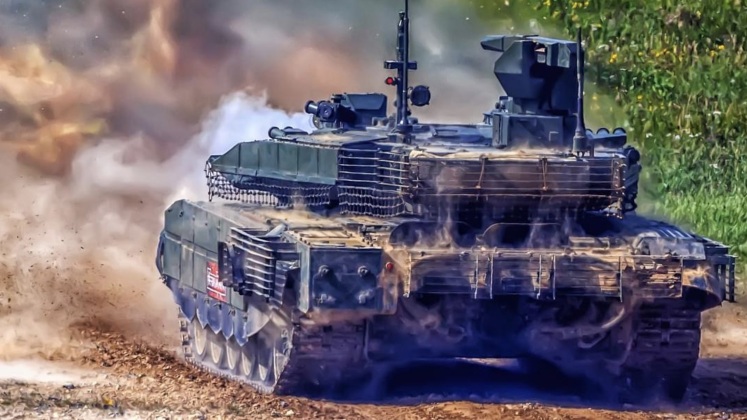News
Update on Operations of Russian Army’s Top Tanks in Ukraine: T-90Ms Thwart Ukrainian Raid

The Russian Army has deployed the most capable tanks in its inventory the T-90M ‘Breakthrough’ to thwart an attempted raid of a Ukrainian reconnaissance group in the Kresny Liman direction, according to reports from the center group of forces. The group’s spokesman reported to this effect: “Unmanned aerial vehicles of the Center group of forces spotted a reconnaissance group of the Ukrainian army’s 81st airborne brigade in the Krasny Liman direction. Crews of T-90M Proryv tanks fired high explosive shells from closed firing positions. The enemy sustained losses and was pushed back to its former positions.” The report comes as footage of T-90Ms operating in Ukraine – usually in Eastern Ukrainian regions which Russia recognised as its own territory from September 2022 – has been released with growing frequency. Although the Russian Army acquired only 10 new T-90 tanks during the 2010s – or an average of one tank a year for the entire decade – the tank was the most produced class in the world by a considerable margin with a production scale exceeding that of all NATO compatible tank classes combined. This discrepancy between production and fielded numbers reflected the fact that Russia exported almost all tanks it was producing particularly from 2000-2020. The result was a massive wartime surge capacity to increase the numbers of T-90s entering service if required – albeit at the expense of neglecting export demand.
Although the Soviet Union had the capacity to produce close to 4000 tanks annually, it remains uncertain how much of this has been retained or whether annual T-90 production can exceed even 200-300 vehicles in Russia now. Continued heavy reliance on the T-90 has largely been a result of post Soviet decline in the Russian economy and defence sector, with its next generation successor the T-95 having suffered major delays in the 1990s before being cancelled the following decade, while a more conservative derivative of the same design, the T-14 Armata, has seen its entry into service delayed repeatedly with none having joined the Russian Army. The T-90M which entered service in April 2020 was the first Russian tank to provide a very major improvement to capabilities over higher end Cold War era vehicles such as the T-80UK.

Notable features of the T-90M include use of Afghanit active protection system and Relikt explosive reactive armour, addition of extra armour isolating the ammunition internally from the crew, and integration of the new 2A46M-5 gun and Kalina fire control system providing compatibility with a range of new munition types. Some of Russia’s latest anti tank rounds were first seen in Ukraine in early 2023 likely to equip T-90M units against incoming new classes of tanks being supplied to Ukraine by its Western backers. At least until Poland began to acquire cutting edge K2 tanks from South Korea, which were ordered in 2022, the T-90M was considered capable fo going head to head with top end NATO armour, albeit with far lower operational costs and logistical needs with fuel consumption in particular being highly modest compared to vehicles such as the M1 Abrams and Challenger 2. As new batches of T-90Ms continue to be delivered to the Russian Army, following heavy losses of T-72 tanks in the early stages of the war which made up the backbone of the Russian tank fleet, there is a very significant chance that by the end of the conflict the T-90M will be the most widely fielded tank class in Russian service. The tanks are currently in production at the Uralvagonzavod factory in central Russia’s Ural mountain regions, although the possibility of restoring tank production at other facilities such as Chelyabinsk or Omsktransmash has been speculated to be under consideration.












